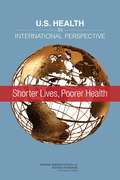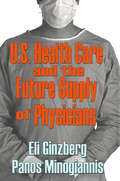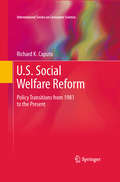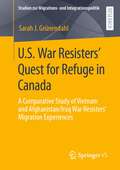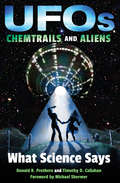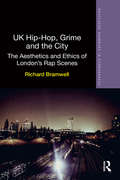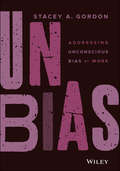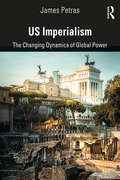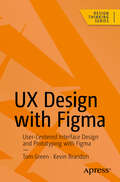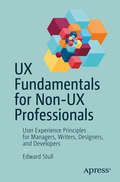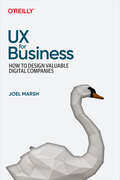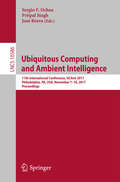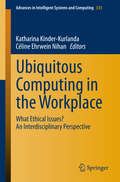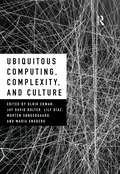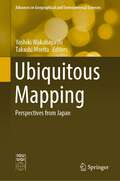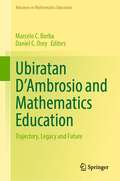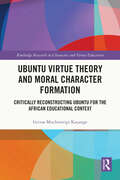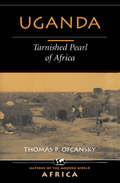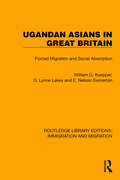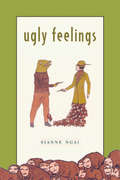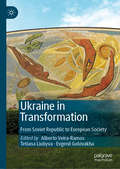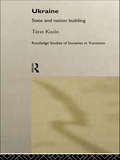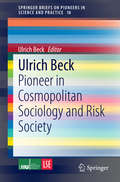- Table View
- List View
U.S. Health in International Perspective
by Steven H. WoolfThe United States is among the wealthiest nations in the world, but it is far from the healthiest. Although life expectancy and survival rates in the United States have improved dramatically over the past century, Americans live shorter lives and experience more injuries and illnesses than people in other high-income countries. The U. S. health disadvantage cannot be attributed solely to the adverse health status of racial or ethnic minorities or poor people: even highly advantaged Americans are in worse health than their counterparts in other, "peer" countries. In light of the new and growing evidence about the U. S. health disadvantage, the National Institutes of Health asked the National Research Council (NRC) and the Institute of Medicine (IOM) to convene a panel of experts to study the issue. The Panel on Understanding Cross-National Health Differences Among High-Income Countries examined whether the U. S. health disadvantage exists across the life span, considered potential explanations, and assessed the larger implications of the findings. U. S. Health in International Perspective presents detailed evidence on the issue, explores the possible explanations for the shorter and less healthy lives of Americans than those of people in comparable countries, and recommends actions by both government and nongovernment agencies and organizations to address the U. S. health disadvantage.
U.S. Healthcare and the Future Supply of Physicians
by Eli Ginzherg Panes MinogiannisMany different sectors of modern society influence the nation's healthcare system. Government, health insurance companies, managed care organizations, academic health centers, the pharmaceutical industry, and other groups all affect healthcare. In the areas of medical access, cost, and quality, the physician remains the key to the efficiency and effectiveness of healthcare services. Eli Ginzberg and Panos Minogiannis, in Ginzberg's final book, examine the supply of health personnel in the United States. They consider the ways it has been influenced by federal and state legislation, healthcare financing, the transformation of the hospital, managed care, and health trends in the last part of the twentieth century. Through this historical approach, the book identifies key moments in U.S. health policy history that have led to problems in the geographical distribution of medical personnel, gender and race representation in the health personnel pool, and subsequent attempts to resolve these problems. This volume pays special attention to current trends in healthcare and tries to forecast the direction of the debate over health personnel supply in the coming years. Chronic care conditions and the ageing of the population on the one hand and the penetration of managed care and the subsequent transformation of American hospitals on the other converge to present policymakers with tremendous challenges in financing healthcare. Ginzberg and Minogiannis argue that a more balanced production and distribution of U.S. health personnel will go far in easing the financial burden of healthcare and at the same time improve the quality of services provided to the American people.
U.S. Social Welfare Reform
by Richard K. CaputoU. S. Social Welfare Reform examines pivotal changes in social welfare for low-income families in the United States between 1981, the advent of the Reagan administration, and 2008, the end of the G.W. Bush administration. It focuses on the change from the Federal-state open entitlement Aid to Families with Dependent Children (AFDC) program to the time-limited state run Temporary Assistance to Needy Families (TANF) program which Congress authorized with passage of the Personal Responsibility and Work Opportunity Act of 1996. The book also focuses on the development of the Earned Income Tax Credit (EITC) program, enacted in 1975 against the backdrop of failed efforts to nationalize AFDC which aimed at providing a basic income to all poor families, but which blossomed with continued bipartisan support in the 1990s. This book also explores alternative strategies to assist low-income families, including job training programs. It present original research on the educational and economic well-being of youth from low-income families who participated in government sponsored job training programs in the late 1970 and early 1980s. The book seeks a middle ground between general and technical social policy texts. It provides more depth than is available in the more general social policy texts. Further, while the more comprehensive texts often rely on government documents and reports relying on Current Population Survey data to profile program use, this book relies on panel data from the National Longitudinal Surveys and presents original research that builds upon prior related research and scholarship about the role of the federal government in social welfare provisioning in general and AFDC/TANF and EITC use in particular and on school-to-work transition programs. It presents related technical material in a narrative style better suited to professionals and policy makers who may lack expertise in quantitative analysis.
U.S. War Resisters’ Quest for Refuge in Canada: A Comparative Study of Vietnam and Afghanistan/Iraq War Resisters’ Migration Experiences (Studien zur Migrations- und Integrationspolitik)
by Sarah J. GrünendahlWhen U.S. war resisters turned to Canada as refuge during the Vietnam War and the Afghanistan/Iraq Wars, they not only hoped to forestall deployment to a combat zone but also to build new lives and make a new home abroad. In her empirical study, Sarah J. Grünendahl explores and juxtaposes how well the two war resister 'generations' have been able to establish themselves after all and to what extent they partake in Canadian society.The comparison is instructive for migration and refugee studies altogether: The war resisters in the sample, unlike many other migrant populations, did not have to contend with language and cultural barriers in their destination country, given similarities between the United States and Canada. Sarah J. Grünendahl's research thus allows for an analysis of the effects of residency on migrants' adaptation and participation in the receiving society, isolated from these two common barriers. Further, the study sheds light on how refugees and non-citizens can employ civic engagement to claim a place for themselves and overcome societal exclusion.
UFOs, Chemtrails, and Aliens: What Science Says
by Donald R. Prothero Timothy D. CallahanA wide-ranging survey offers &“entertainment as well as wisdom for everyone who&’s ever wondered what&’s behind so many conspiracy theories and paranormal phenomena&” (Publishers Weekly). UFOs. Aliens. Strange crop circles. Giant figures scratched in the desert surface along the coast of Peru. The amazing alignment of the pyramids. Strange lines of clouds in the sky. The paranormal is alive and well in the American cultural landscape. In UFOs, Chemtrails, and Aliens, Donald R. Prothero and Tim Callahan explore why such demonstrably false beliefs thrive despite decades of education and scientific debunking. Employing the ground rules of science and the standards of scientific evidence, Prothero and Callahan discuss a wide range of topics including the reliability of eyewitness testimony, psychological research into why people want to believe in aliens and UFOs, and the role conspiratorial thinking plays in UFO culture. They examine a variety of UFO sightings and describe the standards of evidence used to determine whether UFOs are actual alien spacecraft. Finally, they consider our views of aliens and the strong cultural signals that provide the shapes and behaviors of these beings. While their approach is firmly based in science, Prothero and Callahan also share their personal experiences of Area 51, Roswell, and other legendary sites, creating a narrative that is sure to engross both skeptics and believers.
UFOs: Unidentified Aerial Phenomena: Observations, Explanations and Speculations
by Karl SvozilUnidentified phenomena in space, in the Earth's atmosphere, and in waters are too important to leave their exploration to the military and scientific laypersons. Their proper scientific study is important for a variety of reasons; in particular, scientists and the public at large need to know the basic facts, to be informed about the way evidence is recorded, and to understand the difference been reliable evidence and fiction, as well as between plausible explanations and fantasy.With this objective, the book surveys the history of UFO observations, the variety of recorded phenomena, and recounts the efforts of investigative commissions and their published findings.Although wild rumors are demystified in the process, this is not an exercise in rumor-bashing. An open and at the same time critical mindset is the key. Many narratives and hypothesis appear implausible relative to our present state of knowledge; but this alone should not lead to their outright exclusion. Thus the author also pays attention to UFO sightings that have so far eluded explanation in terms of known physics or meteorology. Here the reader will encounter some of the more speculative but scientifically tenable proposals, for example, relating to sudden zigzag motion without apparent inertia or recognizable propulsion, yet always with a clear guide to their plausibility. Last but not least, the book outlines plans and suggestions for future research capable of revealing the existence and intentions of extraterrestrial intelligences, outer-space engineers, or technologies so far known only from science fiction.
UK Hip-Hop, Grime and the City: The Aesthetics and Ethics of London's Rap Scenes (Routledge Advances in Ethnography #14)
by Richard BramwellYoung people in London have contributed to the production of a distinctively British rap culture. This book moves beyond accounts of Hip-Hop’s marginality and shows, with an examination of the production, dissemination and use of rap in London, how this cultural form plays an important role in the everyday lives of young Londoners and the formation of identities. Through in-depth interviews with a range of leading and emerging rap artists, close analysis of rap music tracks, and over two years of ethnographic research of London’s UK Hip-Hop and Grime scenes, Bramwell examines how black and white urban youths use rap to come together to explore their creative abilities. By combining these methodological approaches in the development of a critical participant observation, the book reveals how the collaborative work of these urban youths produced these politically significant subcultures, through which they resist unfair and illegitimate policing practices and attempt to develop their economic autonomy in a city marred by immense social and economic inequalities.
UNBIAS: Addressing Unconscious Bias at Work
by Stacey A. GordonLet the CEO of Rework Work help you understand diversity, equity, and inclusion concepts to actively remove bias from the workplace Dismantling unhealthy workplaces involves much more than talking about it, and more than charts, graphs, and statistics—it requires action. Although it’s increasingly common for businesses of all shapes and sizes to appreciate the importance of diversity and inclusion in the workplace, many are often unaware of bias in the cultures they’ve created. Others might know there’s a problem, but don’t know how to properly address it. UNBIAS: Addressing Unconscious Bias At Work helps you understand concepts of workplace diversity, equity, and inclusion, shows you how to identify bias, and provides you with the tools for actively removing barriers and ensuring equity throughout your organization. Written by Stacey Gordon—CEO of Rework Work, a company on a mission to reduce bias in global talent acquisition and management—this real-world handbook offers step-by-step guidance on creating workplace cultures where employees feel they belong. UNBIAS teaches you to: Identify and address bias in the workplace Understand what you can do to be more inclusive Handle potentially uncomfortable conversations Discuss race in an authentic and meaningful way Use workplace-proven tools that make concepts of diversity and equity actionable Help your employee resource groups without giving them extra work Place accountability on organizational policies that allow biased behavior UNBIAS is a must-have resource for all employers, managers, and HR professionals seeking to create and sustain healthy, inclusive, and equitable workplace environments.
US Imperialism: The Changing Dynamics of Global Power (Studies In Critical Social Sciences / Critical Global Studies #83/6)
by James PetrasThis book offers a broad and deep examination of the dynamics of US imperialism. Petras analyzes imperialism not only as economic domination, showing that its impact in the world takes many forms, including cultural, political and historical. He points to the disruptive effects it has on other world regional economies and cultures. Capitalism and imperialism take diverse forms but both are intimately tied to the projection of state power in the service of capital—a strategy designed to advance the geopolitical and economic interests of the US economic elite and ruling class—interests that are equated with the 'US national interest'.
UX Design with Figma: User-Centered Interface Design and Prototyping with Figma (Design Thinking)
by Tom Green Kevin BrandonMaximize Figma’s arsenal of tools and plugins within a team-based collaborative environment and accelerate your company’s decision making. This book will show you where Figma fits into the user experience (UX) design process from documentation to developer handoff. Since its release as a browser-based design tool in 2016, Figma has fast become the de facto UX Design tool for the industry mainly due to its accessibility and ease of use. As you move through the book you will learn where Figma fits in the UX process. For example, using FigJam (an online whiteboard) for brainstorming, and creating interactive prototypes for mobile devices, tablets, and web sites. You’ll also see how Figma is used to create and integrate with design systems, and how variables, when applied to design system components, can accelerate the design and development workflow. With the help of step-by-step examples, and using Figma’s tools and templates, you’ll create artifacts such as Flow and Journey diagrams, Personas, and wireframes. From there you will explore other design and interactivity features, and how to prepare a Figma file for handoff to a development team. This book is your roadmap to utilizing Figma, the industry’s fastest growing collaborative design tool for building meaningful products. What You Will Learn Create interactive prototypes Test and submit designs for team review Understand the collaborative workflow involved in an UX project Prepare common UX documentation Who This Book Is For Designers, developers, and UX specialists with little-to-no Figma experience who are looking to integrate it within their workflows, and intermediate Figma users who are just starting to become involved in the collaborative UX workflow.
UX Fundamentals for Non-UX Professionals: User Experience Principles for Managers, Writers, Designers, and Developers
by Edward StullDemystify UX and its rules, contradictions, and dilemmas. This book provides real-world examples of user experience concepts that empower teams to create compelling products and services, manage social media, interview UX candidates, and oversee product teams.From product decisions to performance reviews, your ability to participate in discussions about UX has become vital to your company's success as well as your own. However, UX concepts can seem complex. Many UX books are written by and for UX professionals. UX Fundamentals for Non-UX Professionals serves the needs of project managers, graphic designers, copyeditors, marketers, and others who wish to understand UX design and research.You will discover how UX has influenced history and continues to affect our daily lives. Entertaining real-world examples demonstrate what a massive, WWII-era tank teaches us about design, what a blue flower tells us about audiences, and what drunk marathoners show us about software.What You'll LearnKnow the fundamentals of UX through real-world examples Acquire the skills to participate intelligently in discussions about UX design and researchUnderstand how UX impacts business, including product, pricing, placement, and promotion as well as security, speed, and privacyWho This Book Is ForProfessionals who work alongside UX designers and researchers, including but not limited to: project managers, graphic designers, copyeditors, developers, and human resource professionals; and business, marketing, and computer science students seeking to understand how UX affects human cognition and memory, product pricing and promotion, and software security and privacy.
UX for Business: How to Design Valuable Digital Companies
by Joel MarshMany UX designers are surprised to learn that much of the job isn't about drawing things. It's about knowing what to draw and how to convince people to build it. Whether you're a one-person design team making products from scratch or a C-level product leader managing many products and strategies, UX for Business is your missing guide to real-world business design.You'll not only learn how to think about design as a professional but also discover how design can move the needle for your entire company. Author Joel Marsh helps you understand stakeholders, business models, the process of designing valuable solutions, dangerous choices that can ruin a product, and how to gain the attention your work deserves. You'll also explore the principles of designing common types of digital products and services, from portfolio sites to social networks to ecosystems.With this book, you'll learn:How to design the right things by understanding value, diagnostics, and probabilityHow to conduct UX research and analysis without the luxury of time or moneyThe most important aspects of common digital business modelsMethods for getting things done under less-than-ideal circumstancesHow to avoid common pitfalls caused by inexperience
Ubiquitous Computing and Ambient Intelligence
by Pritpal Singh José Bravo Sergio F. OchoaThis book constitutes the refereed conference proceedings of the 11th International Conference on Ubiquitous Computing and Ambient Intelligence, UCAmI 2017, held in Philadelphia, PA, USA in November 2017. The 60 revised full papers and 22 short papers presented were carefully reviewed and selected from 100 submissions. The papers are presented in six tracks and two special sessions. These are Ambient Assisted Living, Human-Computer Interaction, Ambient Intelligence for Health, Internet of Things and Smart Cities, Ad-hoc and Sensor Networks, Sustainability, Socio-Cognitive and Affective Computing, AmI-Systems and Machine Learning.
Ubiquitous Computing in the Workplace
by Katharina Kinder-Kurlanda Céline Ehrwein NihanThis book provides an interdisciplinary collection of views on the ethical challenges and opportunities of workplaces in the Internet of things. Current developments within Ubiquitous computing (ubicomp) systems designed for the workplace are introduced and philosophical, organizational and socio-ethical considerations of ubicomp in workplaces are provided. Suggestions regarding the rules that should be respected in order to favor an adequate implementation of ubicomp in the workplace are offered, considering both intra-organizational but also wider societal concerns. The interdisciplinary collection of contributions invites the reader to engage in the discussion of ubicomp in everyday working environments.
Ubiquitous Computing, Complexity and Culture
by Jay David Bolter Ulrik Ekman Lily Diaz Morten Sondergaard Maria EngbergThe ubiquitous nature of mobile and pervasive computing has begun to reshape and complicate our notions of space, time, and identity. In this collection, over thirty internationally recognized contributors reflect on ubiquitous computing’s implications for the ways in which we interact with our environments, experience time, and develop identities individually and socially. Interviews with working media artists lend further perspectives on these cultural transformations. Drawing on cultural theory, new media art studies, human-computer interaction theory, and software studies, this cutting-edge book critically unpacks the complex ubiquity-effects confronting us every day. The companion website can be found here: http://ubiquity.dk
Ubiquitous Mapping: Perspectives from Japan (Advances in Geographical and Environmental Sciences)
by Takashi Morita Yoshiki WakabayashiSince the last decades of the twentieth century, the circumstances surrounding map use and map making have drastically changed owing to advances in information and communication technologies (ICTs). In particular, the spread of web maps and mobile devices have altered the way people interact with maps. This book features the latest works on theoretical and practical issues of these changes by terming them “ubiquitous mapping”. In particular, the book pays attention to not only the technological basis but also multidisciplinary human–social aspects. The book covers the topics of the evaluation of ICT-based technologies for context-aware mapping, the theory and application of crowd-sourced geospatial information and collaborative mapping, and both the positive and negative effects of ubiquitous mapping on human society.
Ubiratan D’Ambrosio and Mathematics Education: Trajectory, Legacy and Future (Advances in Mathematics Education)
by Marcelo C. Borba Daniel C. OreyThis edited volume is written in memoriam of Professor Emeritus Ubiratan D’Ambrosio (1932 – 2021), who was a well-known Brazilian mathematics educator and historian of mathematics. This book explores the diverse facets of D’Ambrosio’s work as well as his legacy and the later adaptation of his ideas around the globe.It starts with a preface written by his son, Alexandre D' Ambrosio, who shares his personal experiences growing up with this father and his love for discovery. The book is then divided into four sections:Past and Future: Ubi’s Way of Seeing Education in the PresentRoots of EthnomathematicsEthnomathematics in ActionTrends in Ethnomathematics It features diverse points of view and experiences that explore mathematics and culture from researchers in the Americas, Africa, Europe and South Asia. Chapters range from personal explorations of D’Ambrosio’s impact to broader views of his research and work. This book forms part of the growing understanding of Ubiratan D’Ambrosio’s life, research, and the legacy he has left for millions of researchers, students and teachers worldwide. This book is appealing to anyone involved in mathematics education research as well as those interested in the history and future of mathematics education.
Ubuntu Virtue Theory and Moral Character Formation: Critically Reconstructing Ubuntu for the African Educational Context (Routledge Research in Character and Virtue Education)
by Grivas Muchineripi KayangeThis book investigates the ubuntu theory-based conception of virtue and moral character formation in the northern, western, and eastern regions of Africa, suggesting a critical reconstruction of ubuntu by conceptualising the four different forms of practices in moral character formation. Arguing for the critical reconstruction of ubuntu virtue theory as more nuanced than simply the standard ubuntu normative virtue theories (which give priority to the community as the sole locus for understanding virtues and character formation in Africa), the book builds a comprehensive model of virtue and moral character formation that draws insights from the reconstructed notion of ubuntu and other theories within and beyond the African thought. Chapters feature experience from across Africa including Malawi, Zambia, Zimbabwe, Uganda, Kenya, and South Africa, and centre on topics such as traditional cultural views and practices, political systems in various nations, neoliberalist thought, and primary, secondary and tertiary education systems in Africa and further afield. This is a valuable resource for scholars, academics, and postgraduate students, working in the fields of moral and values education, philosophy of education, and the theory of education more broadly. Those also interested in educational psychology may also find the volume of interest.
Uchalya (The Branded)
by Laxman Gaikwad P. A. KolharkarOn Bhamta or Ucalya, socially and economically handicapped people from Maharashtra; first person narrative of a member of the tribe.
Uganda
by Thomas P OfcanskyUganda, a landlocked nation in East Africa, was known during colonial times as the "Pearl of Africa," largely because of its pleasant climate and rich land. For most of the postindependence period, however, Uganda was one of the most brutal and violent nations in Africa. In 1986, a new government seized power, promising to restore internal stability and economic prosperity. Since then, Uganda has gradually become a model for other African states struggling to improve the lives of their citizens. In this broad survey, Thomas P. Ofcansky examines the political, economic, and social themes that have shaped Ugandan history. He inspects the impact of British colonial rule, investigates the emergence of the independence movement after World War II, and analyzes the factors that contributed to the collapse and decay of Ugandan society after Idi Amin's seizure of power in 1971. The author then explores the successes, failures, and prospects of Uganda's current government. In his conclusion, Ofcansky considers the difficulties facing a nation divided by ethnic, religious, and regional cleavages and argues that Ugandan leaders must work to establish a society in which all Ugandans benefit or face the possibility of a return to anarchy.
Ugandan Asians in Great Britain: Forced Migration and Social Absorption (Routledge Library Editions: Immigration and Migration #20)
by William G. Kuepper G. Lynne Lackey E. Nelson SwinertonUgandan Asians in Great Britain (1975) examines the impact of the 1972 immigration of 28,000 Asians expelled from Uganda, looking at the impact on both the immigrants themselves and the British host community. It is an attempt to understand some of the dynamics of forced migrant transition from one society and culture to another. The study was largely carried out in Wandsworth and Slough and shows how these communities – not without social problems before this influx of immigrants – adapted to the new arrivals. The sensitivity and effectiveness of the community relations organisations and the welfare agencies in these areas is revealed.
Ugly Feelings
by Sianne NgaiNgai mobilizes the aesthetics of ugly feelings to investigate not only ideological and representational dilemmas in literature--with a particular focus on those inflected by gender and race--but also blind spots in contemporary literary and cultural criticism.
Ukraine in Transformation: From Soviet Republic to European Society
by Alberto Veira-Ramos Tetiana Liubyva Evgenii GolovakhaThis edited collection provides a comprehensive overview of the major changes and transformations in Ukrainian society, from its independence in 1991, through to 2018. Based on solid empirical quantitative data generated by local institutions such as the monitoring survey Ukrainian Society, produced by the Institute of Sociology of National Academy of Sciences of Ukraine (IS NASU), the contributions explore transitions in values, occupational structure, education, inequality, religiosity, media, and identity, as well as the impact of the “Revolution of Dignity” (Euromaidan) and the Donbas conflict. Covering more than 25 years of Ukrainian history and complemented by qualitative research carried out by authors, Ukraine in Transformation will be invaluable to upper level students and researchers of sociology, political science, international relations and cultural studies, with a particular interest in post-Soviet Eastern Europe.
Ukraine: State and Nation Building (Routledge Studies of Societies in Transition #No.9)
by Taras KuzioUkraine: State and Nation Building explores the transformation of Soviet Ukraine into an independent state and examines the new elites and their role in the state building process, as well as other attributes of the modern nation-state such as borders, symbols, myths and national histories. Extensive primary sources and interviews with leading members of Ukranian elites, show that state building is an integral part of the transition process and cannot be divorced from democratization and the establishment of a market economy.
Ulrich Beck
by Ulrich BeckThis book presents Ulrich Beck, one of the world's leading sociologists and social thinkers, as a Pioneer in Cosmopolitan Sociology and Risk Society. His world risk society theory has been confirmed by recent disasters - events that have shaken modern society to the core, signaling the end of an era in which comprehensive insurance could keep us safe. Due to its own successes, modern society now faces failure: while in the past experiments were conducted in a lab, now the whole world is a test bed. Whether nuclear plants, genetically modified organisms, nanotechnology - if any of these experiments went wrong, the consequences would have a global impact and would be irreversible. Beck recommends ignoring the mathematical morality of expert opinions, which seek to identify the level of a given risk by calculating the probability of its occurrence. Instead, man's fear of collapse should offer an opportunity for international cooperation and a cosmopolitan turn in the social sciences.
